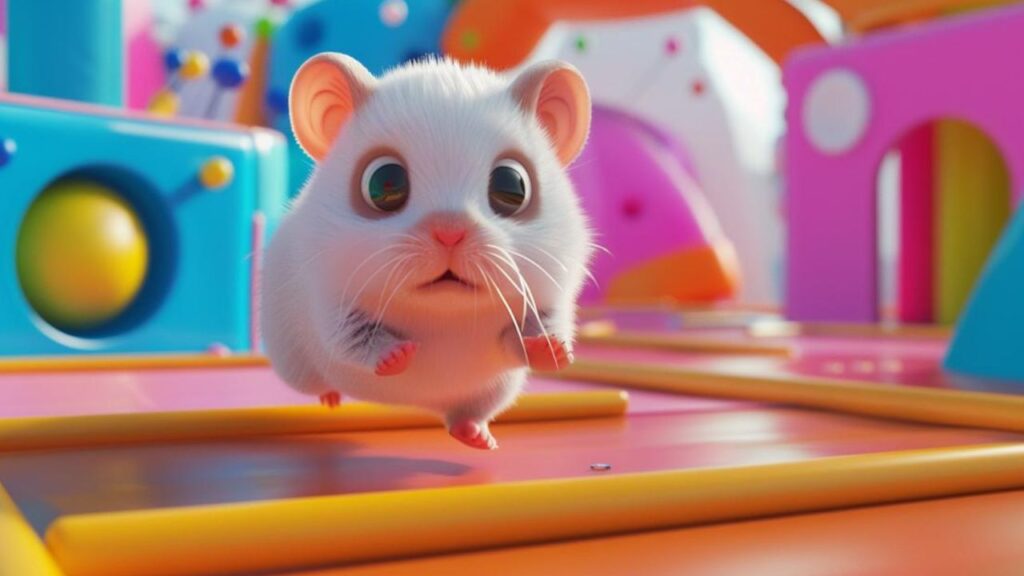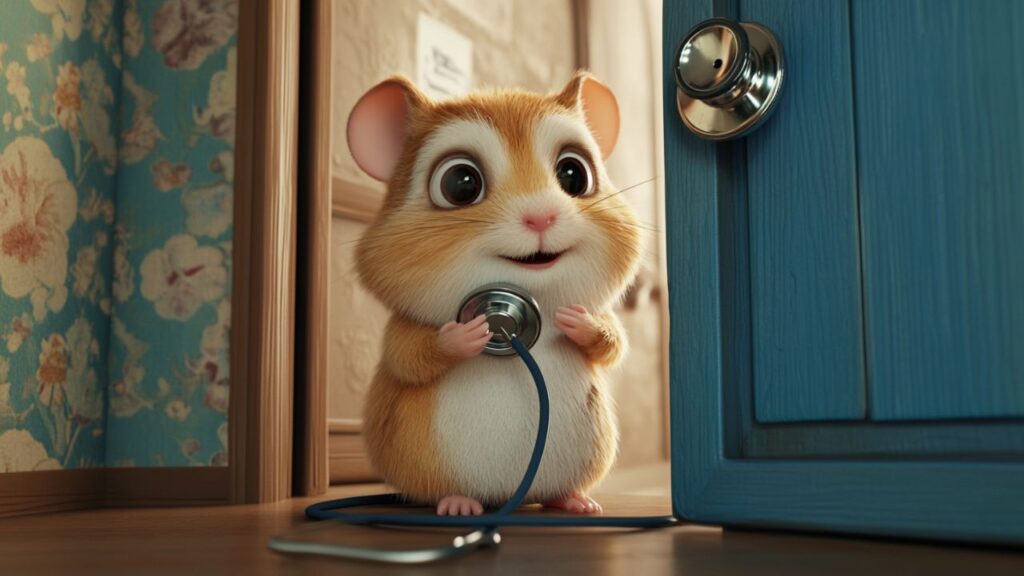Hello, hamster parents and enthusiasts! It’s Hannah Hammie here, ready to guide you through another adorable adventure in the world of hamster training. Today, we’re delving into a trick that’s as charming as it is engaging – teaching your hamster to roll over. Yes, you read that right! While rolling over is a trick often associated with dogs, our clever little hamster friends are also quite capable of mastering this cute stunt with the right approach and a sprinkle of patience.
Imagine the delight of seeing your tiny companion playfully rolling over at your gentle command. This trick is not just about the undeniable cuteness factor; it’s a fantastic way to deepen the bond between you and your furry friend. Training sessions for tricks like rolling over offer more than just amusement; they provide mental stimulation for your hamster and a chance for you to engage with them in a fun and interactive way.
But why roll over, you might ask? Apart from the sheer joy of watching your hamster perform this adorable maneuver, the process of learning and executing the trick can be incredibly beneficial for your pet. It encourages physical activity, sharpens their mental faculties, and strengthens the trust and communication between you and your hamster. Plus, it’s a party trick that’s sure to impress fellow hamster lovers!
So, are you ready to embark on this delightful journey of teaching your hamster to roll over? Grab your treats, cozy up in your hamster training nook, and let’s get rolling!
Decoding the Hamster’s Playful Nature

Diving into the world of hamster training, especially for a trick as delightful as rolling over, requires an understanding of their playful nature. Hamsters, with their unique instincts and capabilities, offer a world of training possibilities when approached correctly. Let’s explore what makes these little creatures tick and how to harness their potential in training.
Natural Instincts and Physical Capabilities of Hamsters
- Curious by Nature: Hamsters are innately curious, always on the lookout for something to explore or play with. This trait can be a huge advantage in training, as it encourages them to engage with new challenges and activities.
- Agility and Movement: Despite their small stature, hamsters are quite agile. They are capable of performing various physical tasks, including rolling over, when taught gently and carefully.
- Understanding Limitations: While hamsters are flexible, they do have limitations in their range of motion compared to other animals. Be mindful of these constraints to avoid causing any discomfort or injury during training.
The Importance of Trust in Training
- Building a Foundation: Successful training is built on trust. Your hamster needs to feel safe and comfortable with you, understanding that you’re a source of positivity and care. This trust is cultivated through consistent, gentle interaction.
- Patience and Respect: Earning your hamster’s trust takes time and patience. Avoid rushing the training process and always respect their boundaries. Forced interactions can be counterproductive and damage the trust you’ve built.
Setting Realistic Expectations for Hamster Tricks
- Individual Differences: Just like humans, every hamster is different. Some may pick up tricks quickly, while others may take more time. Set realistic goals based on your hamster’s individual personality and learning pace.
- Celebrating Small Achievements: Recognize and celebrate even the smallest progress. This not only reinforces positive behavior but also keeps the training process enjoyable for both you and your hamster.
- Keeping it Fun: Remember, the ultimate goal is to have fun and strengthen your bond with your hamster. Training should be a positive and enjoyable experience, not a chore.
Laying the Groundwork for Success

Before we embark on the charming journey of teaching your hamster to roll over, setting the right foundation is crucial. This involves creating a safe training environment, picking the optimal time for sessions, and understanding how to handle your hamster effectively. Let’s delve into these preparatory steps to ensure a smooth and successful training experience.
Creating a Safe and Comfortable Training Space
- Choose a Quiet Area: Hamsters can be easily startled, so pick a quiet spot for training where there’s minimal noise and disturbance. This could be a small, enclosed area in a room where they feel secure.
- Comfortable Surface: Ensure the training surface is comfortable for your hamster. A flat, non-slippery surface is ideal. You can use a mat or a carpeted area to provide extra grip for your hamster.
- Remove Hazards: Clear the training area of any potential hazards. This includes sharp objects, gaps where the hamster could get stuck, or places where they might fall.
- Familiarize the Space: Allow your hamster to explore and get comfortable in the training area before starting with the tricks. This helps in reducing anxiety and making them feel at home.
Choosing the Right Time for Training Sessions
- Understand Their Schedule: Hamsters are nocturnal, so they are most active during the evening and night. Schedule training sessions during these times when your hamster is naturally more alert and energetic.
- Consistency: Try to train at the same time each day. Consistency helps in establishing a routine, making it easier for your hamster to anticipate and prepare for training sessions.
- Avoid Overfeeding Before Training: It’s best not to train right after your hamster has eaten. A full stomach might make them lethargic or uncomfortable. Wait a little while after their mealtime for training.
Essential Tips for Initial Handling and Interaction
- Gentle Handling: When you handle your hamster, do so gently. Let them come to you first, and avoid sudden movements that might startle them.
- Building Trust: Spend time with your hamster outside of training sessions. Let them sit in your hand and get used to your scent. This helps in building trust and makes them more receptive during training.
- Positive Reinforcement: Use treats and soft, encouraging words during training. Positive reinforcement is key in making the learning process enjoyable and effective.
- Understanding Their Mood: Pay attention to your hamster’s mood and behavior. If they seem stressed or tired, it might not be the best time for training. Respect their feelings and try again later.
Teaching Your Hamster to Roll Over
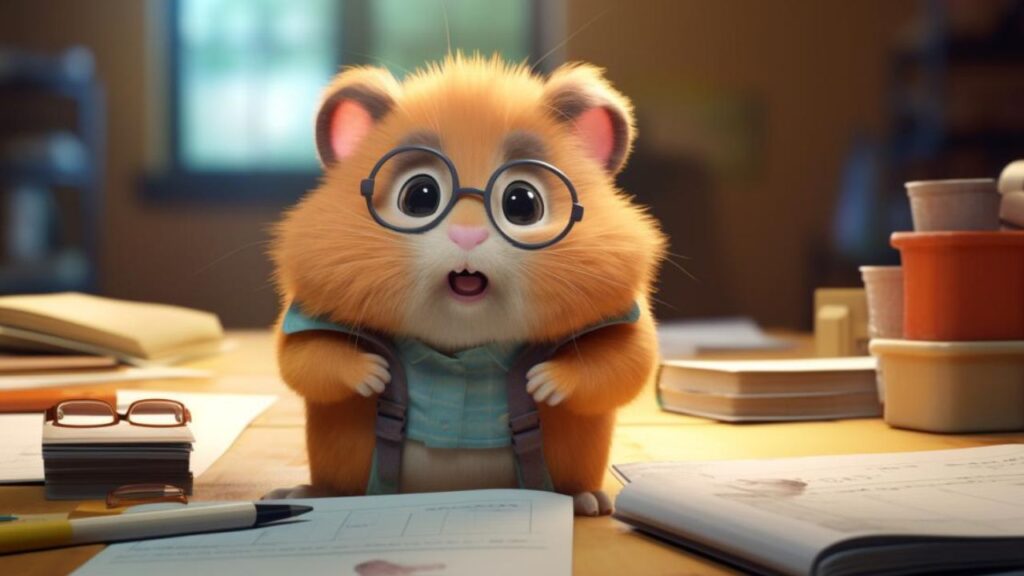
Training your hamster to do a roll-over is an adorable and rewarding experience. It requires a gentle approach, the right motivation, and a lot of patience. Let’s break down the steps to make this training journey as smooth and enjoyable as possible for both you and your fluffy companion.
Introducing the Concept Gently
- Start with Basic Handling: Before attempting the roll-over trick, ensure your hamster is comfortable being handled. Spend time each day gently holding and petting your hamster to build trust.
- First Introduction to Rolling: Begin by gently guiding your hamster to roll on a soft surface. You can do this by carefully and softly encouraging them to turn on their side. It’s important to never force the movement, as this could cause stress or injury.
- Use a Visual Cue: Initially, use a visual cue, like your hand, to guide your hamster. Move your hand in a slow, rolling motion to demonstrate the desired action. Hamsters are very observant and may start to understand the motion through these visual cues.
- Positive Reinforcement: Always accompany these initial attempts with soft, encouraging words. The tone of your voice can be a powerful tool in reassuring your hamster.
Using Treats for Motivation and Reinforcement
- Choosing the Right Treats: Identify small treats that your hamster loves. These will be crucial in motivating them during training sessions.
- Timing of Rewards: Offer a treat immediately after your hamster makes any movement that resembles rolling over, even if it’s just a slight turn. This timing helps them associate the action with a positive reward.
- Incremental Rewards: As your hamster begins to understand the trick, only give treats for more complete roll-over movements. This gradual shift in reward criteria encourages further progress.
Gradual Progression and Patience
- Small Steps: Celebrate and reward even the smallest progress. This could be your hamster showing interest in the trick or attempting a partial roll.
- Repetition and Consistency: Repeat the training regularly but keep sessions short to avoid fatigue. Consistency helps reinforce learning without overworking your hamster.
- Avoid Overtraining: Watch for signs of tiredness or frustration. Hamsters can get overwhelmed with too much repetition. If you notice any signs of stress, give your hamster a break.
- Patience is Crucial: Some hamsters may take longer to learn the trick than others. Be patient and keep the sessions light and fun. The goal is to enjoy this bonding time with your hamster, regardless of how quickly they learn the trick.
Ensuring a Safe and Enjoyable Training Experience
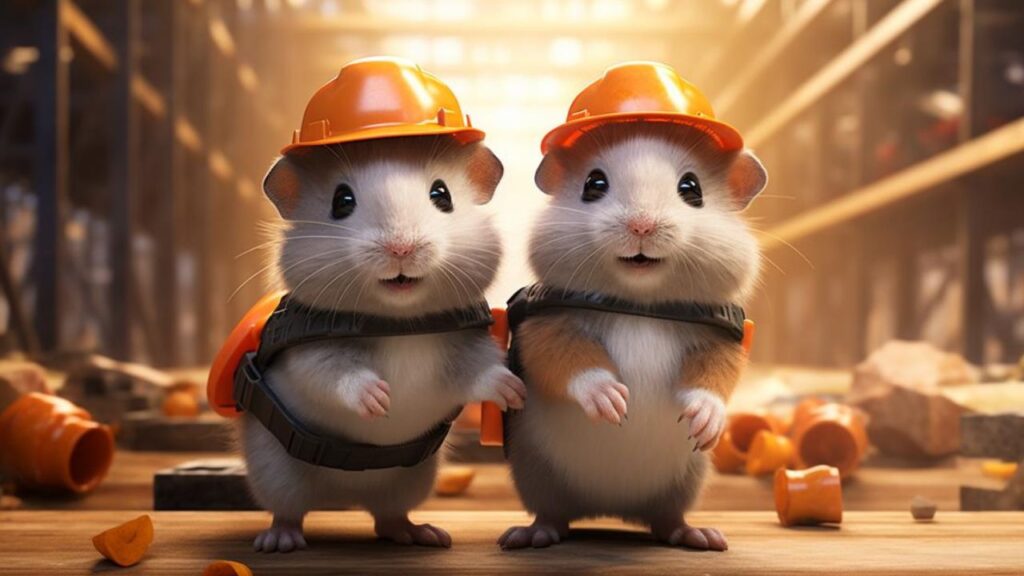
As we delve into the delightful process of teaching your hamster to roll over, ensuring their safety and comfort is paramount. A safe and stress-free environment not only promotes better learning but also keeps your hamster happy and healthy. Let’s explore how to avoid physical strain, understand your hamster’s body language, and recognize the right time to pause or stop the training.
Avoiding Physical Strain and Stress
- Gentle Handling: Always handle your hamster gently. Avoid any sudden or forceful movements that might cause stress or physical harm. Remember, the roll-over should be a natural and gentle roll, not a forced flip.
- Respecting Their Limits: Understand and respect your hamster’s physical limitations. If you notice any sign of discomfort or resistance to the rolling motion, do not persist. Some hamsters may not be as physically inclined to perform this trick, and that’s perfectly okay.
- Creating a Soft Training Area: Ensure the training area is soft and cushioned. A padded surface can prevent injuries if your hamster makes an awkward roll. You can use a fleece blanket or a soft towel.
- Health First: Before starting training sessions, ensure your hamster is in good health. If your hamster is older or has any physical limitations, consult with a veterinarian to determine if this activity is suitable.
Reading Your Hamster’s Body Language
- Signs of Stress: Look for signs such as rapid breathing, freezing, or trying to escape. These are clear indicators that your hamster is not comfortable with the training.
- Engagement Levels: Notice if your hamster is showing interest in the activity. Excitement and curiosity are good signs. If they seem disinterested or distracted, it might not be the right time for training.
- Recognizing Fatigue: If your hamster starts to slow down significantly or stops responding, it may be a sign of tiredness. Training should always be stopped before your hamster becomes overly fatigued.
Knowing When to Pause or Stop
- Hamster’s Mood: Your hamster’s mood is a key indicator. If they seem agitated or stressed, it’s time to take a break or even end the session for the day.
- Frequency of Training: Don’t overdo the training. Short, frequent sessions are better than long, exhausting ones. Monitor how your hamster responds after each session and adjust the frequency accordingly.
- Positive Ending: Try to end each training session on a positive note, even if it means stopping earlier than planned. This ensures that your hamster retains a positive association with the training.
Navigating Training Challenges

Training your hamster to roll over, like any new skill, may come with its share of challenges. It’s important to approach these with understanding and adaptability. Whether your hamster shows a lack of interest, timidity, or simply needs more engaging sessions, there are ways to navigate these hurdles effectively.
What to Do if Your Hamster Is Not Interested
- Reassess the Approach: If your hamster shows little interest in rolling over, it might be time to change your approach. Consider if the training sessions are too long or if the rewards are not enticing enough.
- Switch Up the Rewards: Hamsters are often motivated by food, but each has its own preferences. Experiment with different treats to see what excites your hamster the most.
- Break Down the Trick: Simplify the trick into smaller, more manageable steps. Sometimes, achieving smaller milestones can motivate your hamster to attempt the entire trick.
- Integrate Playtime: Make the training feel like playtime. Sometimes, the formal training environment can be off-putting. Incorporating playful elements can spark interest.
Adjusting Techniques for Timid or Nervous Hamsters
- Create a Trusting Environment: For timid hamsters, building trust is key. Spend more time with gentle handling and petting outside of training sessions.
- Slow and Steady: Introduce the concept of rolling over very slowly. Allow your hamster to get comfortable with each step before moving on to the next.
- Minimize Intimidation: Ensure that the training environment is quiet and free from sudden noises or movements that might scare your hamster.
- Positive Reinforcement: Use lots of praise and treats to reinforce brave behavior. Celebrate even the small steps they take in their training.
Keeping Training Sessions Engaging and Fun
- Variety is the Spice of Life: Change up the training routine occasionally. This can include altering the training environment, using different treats, or changing the time of day for training.
- Incorporate Games: Make the training session feel like a game. This can involve creating a playful narrative or setting up a mini obstacle course that includes the roll-over trick.
- Be Responsive to Your Hamster’s Mood: Pay attention to what your hamster enjoys. Some might like a challenge, while others might prefer a more relaxed approach.
- Keep Sessions Short and Sweet: Long training sessions can be tiring and boring for your hamster. Keep the sessions short, fun, and end them before your hamster loses interest.
Celebrating Roll Over Achievements
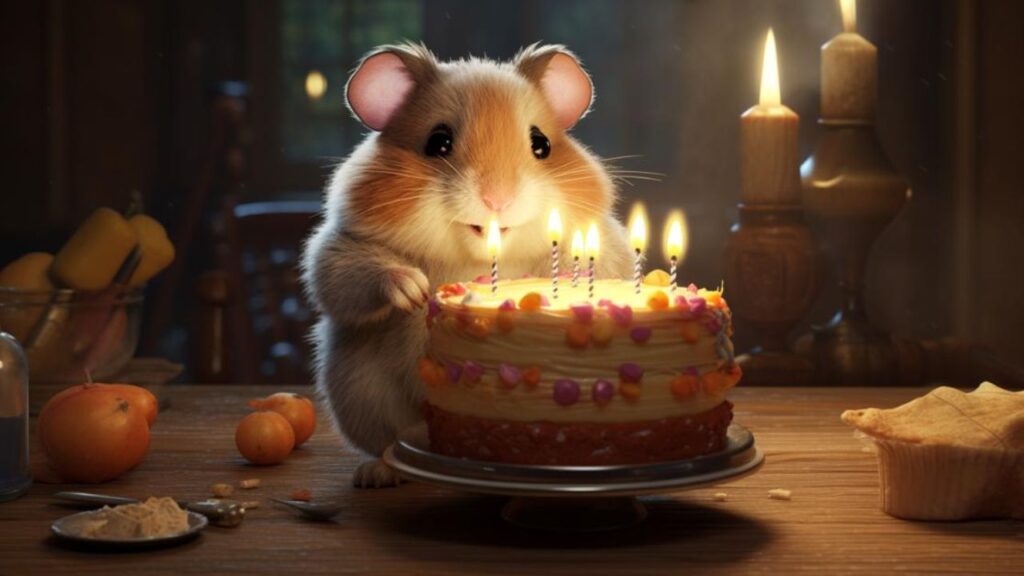
As we wrap up our journey in teaching hamsters the charming roll-over trick, it’s time to celebrate the achievements and share inspiring stories from fellow hamster owners. These stories not only highlight the joy and creativity in training but also offer valuable lessons from experienced trainers. Let’s dive into the world of successful roll-overs and the creative twists that make training a delight.
Inspiring Stories from Hamster Owners
- Muffin’s Mastery: One hamster owner shared the story of Muffin, a once shy hamster who mastered the roll-over trick after weeks of gentle training. Muffin’s achievement became a source of great joy and pride, showcasing the incredible potential of patience and positive reinforcement.
- Bubbles’ Big Moment: Another owner recounted the moment their hamster, Bubbles, first completed a full roll-over. The joy in Bubbles’ actions and the owner’s reaction is a testament to the bond formed through such interactive training.
- Leo’s Leap of Faith: Leo, a timid hamster, surprised his owner by eventually embracing the roll-over trick after initially showing apprehension. His story is a reminder that even the most reserved hamsters can come around with the right approach.
Creative and Fun Variations of the Roll Over Trick
- Roll-Over Relay: One creative owner turned the roll-over into a game, setting up a mini relay course where the roll-over was part of a series of actions. This not only kept the hamster engaged but also provided additional physical and mental exercise.
- Costume Fun: Incorporating fun elements like a lightweight, hamster-safe cape during the roll-over added a playful aspect to the training. It’s important to ensure that any costume is safe and doesn’t restrict movement.
- Roll-Over Race: Another owner trained two hamsters to roll over simultaneously, turning it into a friendly race. This brought an element of fun competition to the training.
Lessons Learned from Experienced Hamster Trainers
- Consistency is Key: Regular, consistent training sessions, even if they’re short, have been crucial in mastering the roll-over trick.
- Understanding Individual Differences: Every hamster is unique, and what works for one may not work for another. Tailoring the training to each hamster’s personality and comfort level is important.
- The Value of Patience: Many trainers emphasized the importance of patience. Celebrating small successes and not rushing the process have been vital in achieving the desired outcome.
- Safety and Enjoyment Above All: Ensuring the hamster’s safety and enjoyment during training has been a priority for all experienced trainers. The wellbeing of the pet always comes first.
Conclusion

As we bring our delightful journey of teaching your hamster to roll over to a close, let’s take a moment to reflect on the wonderful experiences we’ve shared. This journey is more than just about teaching a new trick; it’s about deepening the bond you share with your furry little friend and discovering the joys of patient, positive training.
The Joy and Bonding Experience
Teaching your hamster to roll over is a journey filled with laughter, surprises, and precious bonding moments. Each training session is an opportunity to strengthen your relationship with your hamster, as you work together towards a common goal. The satisfaction of seeing your hamster accomplish this trick, combined with the fun and playfulness it brings into your daily interactions, is truly unmatched. This training not only enhances your hamster’s physical agility and mental acuity but also enriches your understanding and appreciation of their unique personality and capabilities.
Encouraging Patience, Persistence, and Positive Reinforcement
- Patience is a Virtue: Training a hamster requires patience. Each small step forward is a victory worth celebrating, and every hamster learns at its own pace.
- Persistence Pays Off: Consistency and persistence in training are key. Regular, enjoyable training sessions reinforce learning and help your hamster master the trick more effectively.
- The Power of Positive Reinforcement: Positive reinforcement through treats, gentle praise, and affection makes training a rewarding experience for your hamster. It encourages them to participate willingly and enjoy the learning process.
Signature Send-off
In the end, the journey of teaching your hamster to roll over is about creating joyful memories and nurturing a loving and trusting relationship with your pet. It’s about celebrating the small successes and enjoying the unique personality of your little companion.
“With paws and patience, you’re on the road to being a Hamster Whisperer. Happy training!”
Embrace each training session with enthusiasm and love, and watch as your hamster thrives under your care and companionship. Here’s to many more fun and fulfilling training adventures with your adorable hamster!


